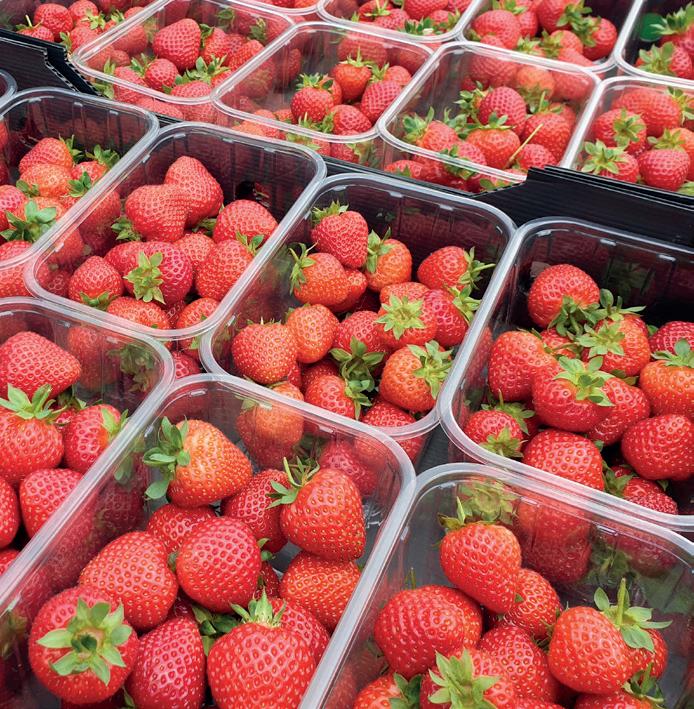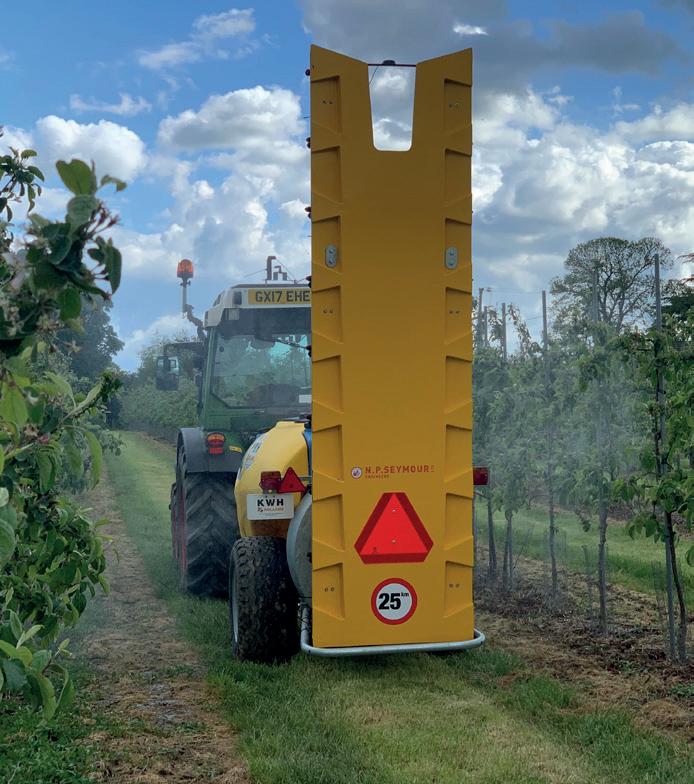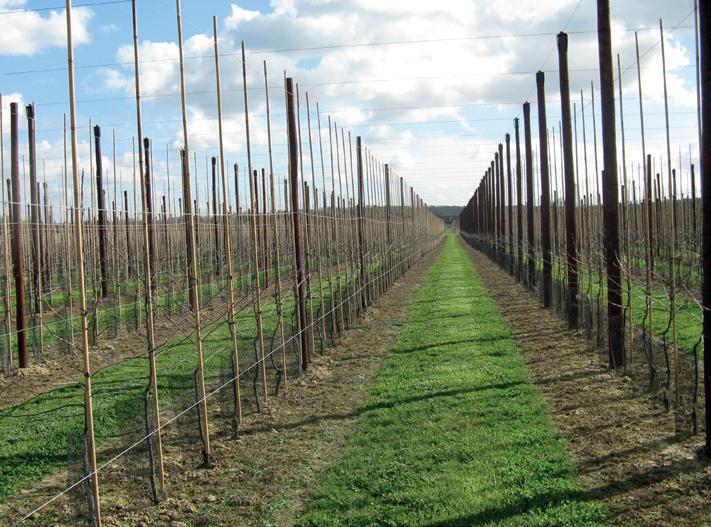
2 minute read
Developing methods to recycle coir substrate
Title: To evaluate the extent of biological, chemical and physical changes between virgin, re-used and recycled coir
Funder: Overland Ltd
Advertisement
Term: April 2022 to March 2023
The majority of fresh-market strawberry, raspberry and blueberry crops produced in the UK are now grown in coir substrate, which is more sustainable than peat as it is a by-product of the coconut industry. It offers lower plant disease risk compared to soil-grown crops, but the cost of virgin coir is increasing along with transport and shipping costs, which has an environmental impact. Supplies are also limited and there is a cost attached to its disposal, so the soft fruit industry is interested in re-using existing stocks (Figure 1), but this is known to lead to increased disease, pest and weed problems, and chemical and physical degradation can lead to reduced yields. EU funded research at NIAB (HORTI Blue C) with Berry Gardens Growers Ltd showed successful re-planting of coir bags with Junebearer strawberry, but significant yield penalty resulted when everbearers were re-planted year on year.
The project
Overland Ltd, a company offering agricultural waste removal and recycling services in Kent funded this project and worked with NIAB to find ways of mitigating the biological, chemical and physical risks before re-using spent coir. They tested factors that might be responsible for yield decline and compared strawberry plant growth in virgin coir, directly re-used coir, composted coir and coir that has been recycled using a system that Overland is developing. They measured physical and chemical changes, presence of pathogens and yield/production data for two different coir mixes and compared the results.
Results
The number of air spaces or air filled porosity (AFP) in directly reused coir from both types was lower than virgin coir, and this resulted in a high increase in water holding capacity in both types of reused and recycled coir. The degradation of AFP and increase of water holding capacity, was far greater in one of the coir mixes compared to the other. This was caused by reduction in the number of large particles (5-20mm) in the reused coir compared to virgin material. Composted coir also saw a reduction in AFP, although interestingly one type had a much larger reduction in large particles than the other. The initial quality of coir mix has a major influence on its long term physical properties and potential for re-use.
Differences in the chemical properties were also influenced by coir mix type, with one showing a marked increase in pH after re-use and composting, while the other showed a slight decrease. The EC of both types of coir mixes increased after composting and recycling, while K and Ca levels varied depending on the coir type. The levels of such nutrients can affect the feed recipe required when using coir for a second time.
Work to assess the levels of Phytophthora cactorum (the cause of crown rot) showed that the incidence of the pathogen increased in composted coir, but where the coir was recycled using the system Overland has been developing, the incidence of the pathogen was no different to virgin coir. Further work needs to be done to assess the impact on other pathogens.
When yield and productivity were assessed, directly re-used coir recorded a 10% reduction in yield, composted coir recorded a 16% reduction, but recycled coir recorded a 4% reduction. Although this figure is still significant, it suggests that if the recycling system can be improved further, yield reductions may be reduced. It is worth noting that all coir types were irrigated with the feed amount and composition optimised for virgin coir. Plants in recycled coir may have received too much water and imbalanced feed resulting in decreased yield.
Further work is proposed to refine and improve the recycling procedure used by Overland, where they are seeking to improve the physical properties, mitigate chemical imbalances, inactivate a wide range of pathogens and measure risks of pests and weeds. They also plan to provide agronomy/ fertigation guidance on how to maximise the potential of recycled media, and produce an economic and environmental assessment of recycled media.









